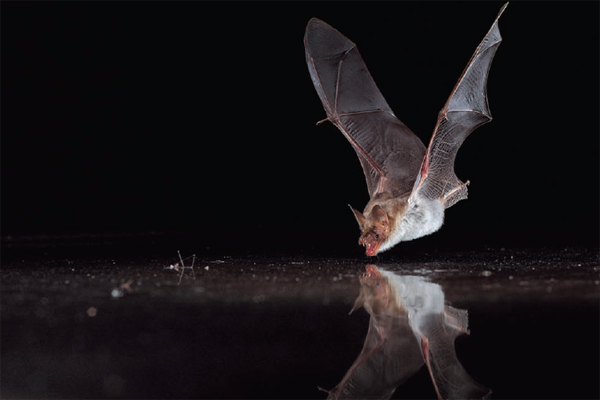A bat, flying through the night sky, is thirsty. As it flies, it sends out high-pitched squeaks and listens for the returning echoes. It hears a telltale pattern. It hears no echoes form up ahead and the only ones that reflect back at it are coming from straight below. That only happens when the bat flies over a flat, smooth surface like the top of a lake or pond. The bat dives, opens its mouth to take a sip of refreshing water… and gets a mouthful of metal.
In nature, bodies of water are the only large, smooth surfaces around. Waves of sound that hit the surface of still water would generally bounce away, except for those aimed straight downwards. Stefan Greif and Björn Siemers from the Max Planck Institute for Ornithology have found that bats are instinctively tuned to find water using this unique feature (and yes, the institute does mostly, but not exclusively, bird research).
The man-made world is full of surfaces with the same properties, including metal, plastic and varnished wood. When Greif and Siemers released bats over smooth plates made of these materials, the animals tried to drink from them. If the plates were textured with small ridges, the bats ignored them. This instinct seems common to echolocating bats, for Greif and Siemers tested 15 different species with varied lifestyles and distantly related families. All of them did the same thing. Read more


